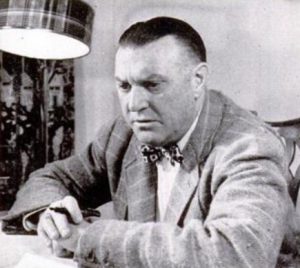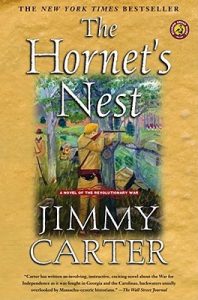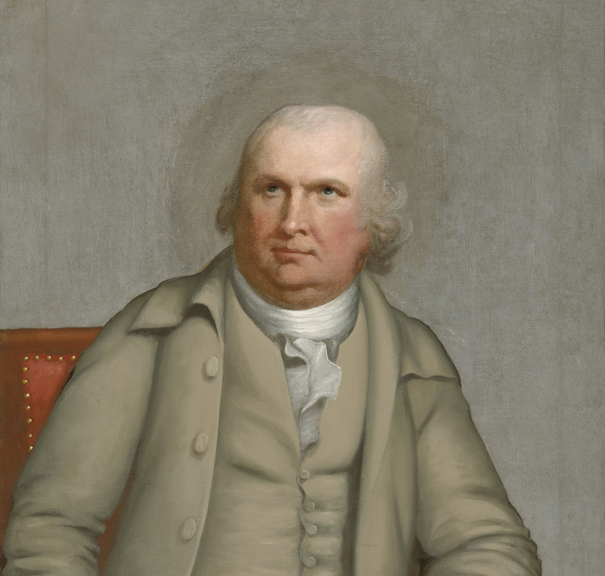Although Journal of the American Revolution publishes only factual material based upon primary sources, we recognize that historical fiction can be a valuable source of inspiration and understanding in the study of history. We posed this question to our contributors about their own favorites:
What is the most historically accurate fictional writing about the American Revolution or founding era (circa 1765-1805) that you have read?
Surprisingly few offered the same author or title, revealing a wide selection of accurate and engaging offerings for those who wish to venture outside the realm of nonfiction history.
James Kirby Martin
There are some good efforts out there in terms of historically accurate fictional writing, but the very best of them was and still is represented in the work of Kenneth Roberts (1885-1957). Along with masterful story telling, integrating real historical characters and events was Roberts’ greatest strength. His big three novels focusing on the Revolutionary era are Arundel (1929), based on Benedict Arnold’s march to Quebec through the patriot defeat there in 1775; Rabble in Arms (1933), which traces the rebel retreat from Canada in 1776 and, also, key events of the Saratoga campaign; and Oliver Wiswell, which features the adventures of a loyalist who experienced the war from the outbreak of fighting in the Boston area through the failed patriot siege at Fort Ninety-Six in South Carolina, and even beyond. I began reading these three and other novels by Roberts when in college. Roberts’ work helped convince me that the best history has an important story to tell while making meaningful interpretive points along the way. My graduate school mentor, the late Merrill Jensen, once told me that he thought Roberts was a better researcher than most historians. And let me add that as a master story teller, Roberts endures to this day at the top of the heap.

Lars D. H. Hedbor
I certainly strive to maintain the high standard of historical accuracy in my own Tales From a Revolution series that led one historian to remark, “There’s nothing you wrote in here that couldn’t have happened exactly that way!” However, I must also commend the work of Stephanie Dray and Laura Kamoie in their collaboration on their novels America’s First Daughter and My Dear Hamilton. Working from stacks of primary sources for both books, as well as visiting the locales where the books were set, this team not only evoke the era, but have convincingly teased out details from the sources that historians haven’t even yet written formally about. In focusing their richly detailed storytelling on the lives of women who influenced the course of history, but who are not often acknowledged, Dray and Kamoie have expanded their readers’ understanding of the era, and their books are well worth reading.
 John Concannon
John Concannon
Rise to Rebellion by Jeff Shaara, 2001, tells the story of the events leading up to the American Revolution. The book spans from the Boston Massacre to the signing of the Declaration of Independence in 1776.
Daniel J. Tortora
Arundel by Kenneth Roberts.
Steven C. Hertler
I have read nearly every biography of John Adams and had finally gotten around to that written my Catharine Drinker Bowen, John Adams and the American Revolution (Boston: Little, Brown and Company, 1950). I thought it was a history book. I read it with rapt attention and only noticed part of the way through that she could not possibly know first-hand some of what she was writing. Bowen has these complex dialogues in quotations and then even reports on what John Adams thought in particular instances. Now I have read his diary closely and don’t see that she based her reports of “John’s consciousness” on what he wrote. I cannot find whether this book is considered biography or biographical fiction. Once I got over my surprise and started thinking of this book as historical fiction, I then enjoyed it thoroughly once again. Everything that Adams is supposed to have said and thought is characteristic of the man through and through. So if it is right to regard this book as a work of historical fiction, I give it my nomination.
John Grady
Johnny Tremain by Esther Forbes. I read it three or four years before the Disney movie. What I remember from it was Esther Forbes’s description of the Boston Tea Party. The Indian disguises, the defiance! It just grabbed my attention as a nine, ten, or possibly eleven-year-old. I had heard something about the Tea Party in school, but this made it graphic and with a participant, eyewitness just a little older than I was at the time. From that time on, I wanted to know more about history, more about the Revolution.
Lindsey Wood
My Dear Hamilton by Laura Kamoie and Stephanie Dray does an impressive job of utilizing letters and other primary sources to explore Elizabeth Schuyler Hamilton’s life and experiences through the Revolution and Founding Era. The story focuses on Eliza’s personal growth and her contributions to the Revolutionary cause throughout her life. What creative liberties they take are done with good reason, usually in the interest of providing a fuller understanding to the reader or to maintain pacing and flow of the key points in her life.
Ken Daigler
The Spy by James Fenimore Cooper, published in 1821. While John Jay’s counterintelligence agent Enoch Crosby was not really the model for the novel’s hero Harvey Birch, the story did contain details and scenarios from Jay’s and Crosby’s operations against the Tory sympathizers in the Hudson Valley. It is usually considered America’s first spy story. It provides operational details and methodology which would be censored today by various members of the U.S. Intelligence Community, one suspects, as protected “sources and methods.”
Richard F. Welch
Anything by Kenneth Roberts. If I had to choose it would be either Rabble in Arms, the culmination of the Saratoga Campaign, or Oliver Wiswell, the Revolution from a Tory perspective. Roberts was famously diligent and thorough in his research, and even published some non-fiction based on it. His historical characters are presented accurately, and most of his fictional ones act in the manner and mores of the times (his female characters and romantic depictions are generally weaker). Wiswell, in particular, presents Loyalist viewpoint accurately, even sympathetically, and demonstrates why a large chunk of the population opposed the Revolution. His depiction of Revolutionary incompetence, demagoguery and corruption (and British failures on that score), drives home how closely run the War of Independence actually was.
Nichole Louise
There are so many for me, but one that sticks out is America’s First Daughter by Stephanie Dray and Laura Kamoie about Patsy Jefferson.
 Roger Smith
Roger Smith
I have found President Jimmy Carter’s The Hornet’s Nest to be one of the finest efforts of historically-accurate historical fiction. Carter spends several pages in the front of the book identifying who the fictional characters and historical figures are that the reader is about to meet. He writes that he invested seven years of research into this book because of his concern for missing southern history in the Revolutionary War.
John L. Smith, Jr.
In 1930, a Maine author—Kenneth Roberts—published the still-popular fictional novel Arundel. It’s a story of Col. Benedict Arnold’s expedition through the Maine wilderness in 1775 to attack British Quebec City. Roberts, who also wrote such books as Northwest Passage, specialized in historical novels—but with a twist. His books were models of historical accuracy and non-fiction historians, to this day, are particularly grateful to him for his research on Arundel. Roberts collected and used original journals and diaries by members of Arnold’s expedition to compile the background facts of Arundel. Roberts later annotated and published these collected journals as March to Quebec. That book remains a perfect bookend to Arundel.
Kim Burdick
John Haslet: A Useful One by Fred B. Walters, 2005. Seems to be a self-published book but is well-written, carefully-researched, and very readable. The author is a professional journalist from the Philadelphia area.
William M. Welsch
Monmouth by Charles Bracelen Flood, 1961. It covers the Valley Forge encampment to the Battle of Monmouth period, focusing on Allen McLane’s company in the no-man’s land between the armies. It’s accurate, interesting, and presents a good picture of the challenges facing both armies and the local civilians, culminating in the battle. Mr. Flood was kind enough to sign my copy.
Rand Mirante
I enthusiastically recommend Kenneth Roberts’ Arundel (first published in 1930) to anyone unfamiliar with it. Commencing with a lyrical description of the natural world of the Maine coast, it rivetingly propels the reader onward towards its thrilling climax, when survivors of Arnold’s 1775 wilderness trek take part in a dramatic vendetta on the frigid streets of snow-bound Quebec. The novel is rooted in primary-source letters and journals, which Roberts painstakingly assembled and which now reside in the Dartmouth College library. Even though he was writing ninety years ago, Roberts’ style comes across as fresh and engaging. He accentuates Arnold’s superb leadership qualities, depicts Native Americans (on both sides) with real dimension and individuality, and immerses the reader in an unforgettably grueling slog through the bleak and trackless environs of the Kennebec and Chaudière rivers.
David O. Stewart
Crossing Point by James Glickman, which focuses on Rhode Island during the war; the book portrays betrayals, tensions on the patriot side, and the harsh realities of the war. Glickman offers sensitive views of the Ward family (Governor Samuel, and his son Samuel, a Continental officer) and the Greenes.
 C. E. Pippenger
C. E. Pippenger
Oliver Wiswell by Kenneth Roberts. I read it when I was fifteen. Up until then, I believed the politically correct Revolutionary history. Oliver Wiswell taught me there is much to learn by keeping an open mind and looking at history from all sides. I owe Kenneth Roberts a great debt not only for opening my eyes but for the example he set. He had the courage to write the other side even though he knew many would not believe his story. All Roberts’s fiction is historically accurate and worth the read.
William Manthorpe
The Spy by James Fenimore Cooper. Appropriately hidden beneath a period romance novel set in Westchester County during the British occupation of New York and before Washington moved south, is the story of a suspicious “peddler” and a mysterious man. Only upon his death at the end of the book is the peddler found to be a double agent for Washington. The mysterious man remains unknown. The story is “based on a true story” or, rather, an “anecdote” of the exploits of real-life double agent Enoch Crosby told to the author by John Jay, Crosby’s recruiter and contact.
Joshua Shepherd
For a novel on the war in the west, That Dark and Bloody River by the late Allan Eckert is a good choice. One need always remember that it’s a novel, not nonfiction, but Eckert rendered a fine narrative of the Revolution in the Ohio Valley. It’s an engaging read, but the text is filled with portions of primary documents. Eckert was well-studied on the habits and customs of the region’s native tribes, and was skilled in bringing a vanished culture—and a turbulent era—back to life on the printed page.
J. L. Bell
In 1943, Esther Forbes received a Pulitzer Prize for her biography Paul Revere and the World He Lived In. Even after three-quarters of a century and much deeper social history, it’s still a respected and vivid portrait of middling-class life in Revolutionary Boston. That same year, Forbes applied her research to writing the novel Johnny Tremain. That book, too, shows its age in its plotting and politics, but it pulls its most affecting drama out of the real everyday life of the past.










4 Comments
Great choices! Just seeing titles like Arundel, Rabble in Arms and Johnny Tremain makes me want to make a long arm over to the shelves and get down my old friends. Long overdue. Oliver Wiswell, too. Thanks for the giving me the nudge.
I would second David Stewart’s nomination of Crossing Point by James Glickman. I did an Amazon review explaining my reasons. The Amazon listing for the book also contains kudos by professional historians and reviewers.
My favorite is Drums Along The Mohawk by Walter D. Edmonds. My mother gave this to me when I was much younger and I have read it at least five times. It is the story of the revolution in the Mohawk River Valley, and the story of my ancestors, some of whose names are actually in the book. This book, more than any other, has driven my interest in the American Revolution and in my family’s genealogy. Five stars!!!!!
The remarkable detail of “Arundel” was gripping but entertaining as everything which I have read by Kenneth Roberts, the first being in high school (1949) – Captains Courageous? or Lydia Bailey?- until reading most of them again during the past 5 years.